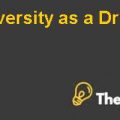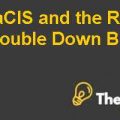
INTRODUCTION:
Mission Statement:
“With a library of over 5,000 characters, Marvel Entertainment Inc. is one of the world's most prominent character-based entertainment companies. Marvel's operations are focused on utilizing its character franchises in licensing, entertainment, publishing and toys. Areas of emphasis include feature films, DVD/home video, consumer products, video games, action figures along with role-playing toys, television and promotions. Rooted in the creative success of over sixty years of comic book publishing, Marvel's strategy is to leverage its character franchises in a growing array of opportunities around the world.”
Marvel focuses on bringing its characters to life in order to make them relatable to the public to make them feel like they are like one of them. Even though they have super powers but they still have to face problems like any other individual in everyday life.
HISTORY
Marvel is a company that had filed for bankruptcy on 1st Oct 1998 while posting a loss of $105 million loss in year 2000. However, it attained miraculous recovery in merely three and a half years i.e. by June 2004 the company was completely debt free
The company was founded in 1930s with its core revenue coming from sales of comics. Marvel had established itself with The Human Torch, The Sub-Mariner and Captain America with which Marvel was able to make a name and establish its unique entity, but in the subsequent period the comic book market slumped due to the fact that parents felt they had harmful effects on their children. Marvel was able to revive itself by creating the Marvel universe and by introducing new characters such as The Fantastic Four and The Amazing Spider Man, which brought Marvel in a position to compete with DC comics with its lineup of Super Man, Bat Man, etc.
REVOLUTION
In 1989, Ronald Perelman purchased Marvel by listing on the stock exchange and renaming it as Marvel Entertainment Group. Ronald conducted restructuring within the company by removing unprofitable lineups and working its way up acquiring other comic-book publishers. The strategy had started generated profits but in the pursuit of profits, Ronald reduced the quality of the comics and increased the prices, which left the collection with worthless papers and with no value. Consequently, in mid-1990 the comics of the company saw a sharp decline in sales, which hit the company so hard that it had to file for bankruptcy in the late 1990s.
1st Oct 1998 was the day of reincarnation for Marvel as it was acquired by Toy Biz Inc. and rebranded as Marvel Enterprises Inc.
TURNAROUND
Perlmutter and Arad, former owners of the Toy Biz Inc. formed the board of Marvel by hiring a new CEO and new executives. The turnaround was not be easy as the company had already posted a loss of $105 million in 2000.
This company was developing and licensing the characters of Marvel, which will follow itself not only in the form of movies, motion pictures, video games and television but it will follow in the form of toys, apparel, collectables and food. . In addition, the focus was on idea that in case they have seen the movie then they will buy our merchandise and will play the game as well.
The follow up to this strategy was the task of managing these characters to sustain their value in the future. It was like the company was managing superstars there bookings, schedules and deals just the difference being the superstars were not similar to Brad Pitt as it was Spider-Man and Captain America.
The strategy was bringing the desired results for the board; the company was able to pay-off all of its debt by the mid-June 2004 and was completely debt free.
PROBLEM STATEMENT
With all the success the board was faced with a tough question, was this success a fluke? Or will the company be able to sustain it?
Was Marvel restricted to a few famous characters such as Spider-Man, which has been the most famous character for Marvel, what about the 4000 other characters Marvel holds in its library?
The question was should Marvel continue milking these Cash Cows or was it time to develop the overall brand and introduce as well as brand new characters in the market and if so then how? What will be the marketing strategies that Marvel needs to follow so as to make this happen?
These were the problems at hand for Marvel for which considerations had to be made...................
This is just a sample partial case solution. Please place the order on the website to order your own originally done case solution.
Management team Marvel Enterprises, known for its universe of superheroes characters, which includes Spider-Man, Hulk, and X-Men, should reconsider their marketing strategy. In June 2004, just six years after the company emerged from bankruptcy, Marvel amassed a market value of more than $ 2 billion. Originally known as a comic book publisher, the company now has a very advantageous toys, movies, and consumer products licensing operations. However, doubts about the business model of Marvel and its growth potential continues to exist. If Marvel winning streak was just a fluke? Success was a miracle in the reliance on a limited set of characters blockbuster first Spider-Man, and should continue to capitalize on these Marvel characters? Or it was time to look for a lot more growth in the lesser-known characters? In the process, opportunities for growth, it was wise for Marvel to go beyond its current business model and move to a more capital-intensive activities? What marketing strategies would allow Marvel to maintain its success in the coming years? Includes color exhibits. "Hide
by Anita Elberse Source: HBS Premier Case Collection 20 pages. Publication Date: November 14, 2004. Prod. #: 505001-PDF-ENG













